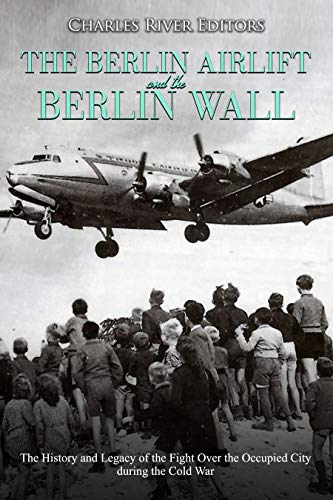The Berlin Airlift and Berlin Wall: The History and Legacy of the Fight Over the Occupied City during the Cold War
*Includes pictures*Includes online resources and a bibliography for further reading*Includes a table of contents In the wake of World War II, the European continent was devastated, and the conflict left the Soviet Union and the United States as uncontested superpowers. This ushered in over 45 years of the Cold War, and a political alignment of
*Includes pictures
*Includes online resources and a bibliography for further reading
*Includes a table of contents
In the wake of World War II, the European continent was devastated, and the conflict left the Soviet Union and the United States as uncontested superpowers. This ushered in over 45 years of the Cold War, and a political alignment of Western democracies against the Communist Soviet bloc that produced conflicts pitting allies on each sides fighting, even as the American and Soviet militaries never engaged each other. Though it never got “hot” between the two superpowers, the Cold War was a tense era until the dissolution of the USSR, and nothing symbolized the split more than the division of Berlin. Berlin had been a flashpoint even before World War II ended, and the city was occupied by the different Allies even as the close of the war turned them into adversaries.
If anyone wondered whether the Cold War would dominate geopolitics, any hopes that it wouldn’t were dashed by the Soviets’ blockade of West Berlin in April 1948, ostensibly to protest the currency being used in West Berlin but unquestionably aiming to extend their control over Germany’s capital. By cutting off all access via roads, rail, and water, the Soviets hoped to force the Allies out, and at the same time, Stalin’s action would force a tense showdown that would test their mettle.
As the success of the Berlin Airlift became clear, the Soviets realized the blockade was ineffective, and both sides were able to save face by negotiating an end to the blockade in April 1949, with the Soviets ending it officially on May 12. The Airlift would technically continue until September, but for all intents and purposes, the first crisis of the Cold War had come to an end, and most importantly, the confrontation remained “cold.”
After the Soviets’ blockade of West Berlin was prevented by the Berlin Airlift, the Eastern Bloc and the Western powers continued to control different sections of the city, and by the 1960s, East Germany was pushing for a solution to the problem of an enclave of freedom within its borders. West Berlin was a haven for highly-educated East Germans who wanted freedom and a better life in the West, and this “brain drain” was threatening the survival of the East German economy.
In order to stop this, access to the West through West Berlin had to be cut off, so in August 1961, Soviet premier Nikita Khrushchev authorized East German leader Walter Ulbricht to begin construction of what would become known as the Berlin Wall. The wall, begun on Sunday August 13, would eventually surround the city, in spite of global condemnation, and the Berlin Wall itself would become the symbol for Communist repression in the Eastern Bloc. It also ended Khrushchev’s attempts to conclude a peace treaty among the Four Powers (the Soviets, the Americans, the United Kingdom, and France) and the two German states.
The fall of the Berlin Wall is often considered the end of the Cold War, and the following month both President Bush and Gorbachev declared the Cold War over, but the Cold War had been thawing for most of the 1980s. President Reagan is remembered for calling the Soviet Union an “evil empire” and demanding that Gorbachev tear down the wall, but he spent the last several years of his presidency working with the Soviet leader to improve relations. The end of the Soviet Union came when Gorbachev resigned on December 25, 1991. The Soviet Union formally dissolved the next day, and the Cold War was over, with the United States outlasting its long-time adversary.
The Berlin Airlift and Berlin Wall: The History and Legacy of the Fight Over the Occupied City during the Cold War chronicles the history that led to the Soviet blockade, the famous relief efforts undertaken to beat it, and the construction of the 20th century’s most notorious wall.
Bestsellers 2021
Auto Amazon Links: No products found.







Comments
Comments are disabled for this post.